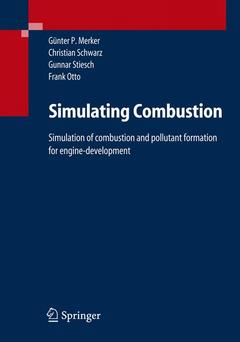Simulating Combustion, 2006 Simulation of combustion and pollutant formation for engine-development
Auteurs : Merker Günter P., Schwarz Christian, Stiesch Gunnar, Otto Frank

Professor Dr.-Ing. habil. Günter Peter Merker received is Dr.-Ing. for his thesis on Thermodynamics in Munich, where he received the venia legendi as well. Since 1994 he is Professor for Applied Thermodynamics at Hannover University, Faculty of Mechanical Engineering, and renown for his scientific work for major public and industrial research institutions.
Professor Dr.-Ing.habil Christian Schwarz studied Mechanical Engineering in Munich. Since 1997 Professor Schwarz is employed by BMW AG.
Dr.-Ing. habil Gunnar Stiesch studied Mechanical Engineering at Hannover University and University of Wisconsin-Madison. In the year 2000 he was research fellow at the Engine Research Center at the University of Wisconsin-Madison. Since 2003 Dr. Stiesch is a researcher for MTU Friedrichshafen GmbH.
Dr. rer. nat. Frank Otto studied Physics Heidelberg University, where he finished his PhD-Thesis 1991. Since 2002 Dr. Otto works as a Projectmanager for Daimler Chrysler AG.
Date de parution : 10-2005
Ouvrage de 402 p.
17x24.2 cm



